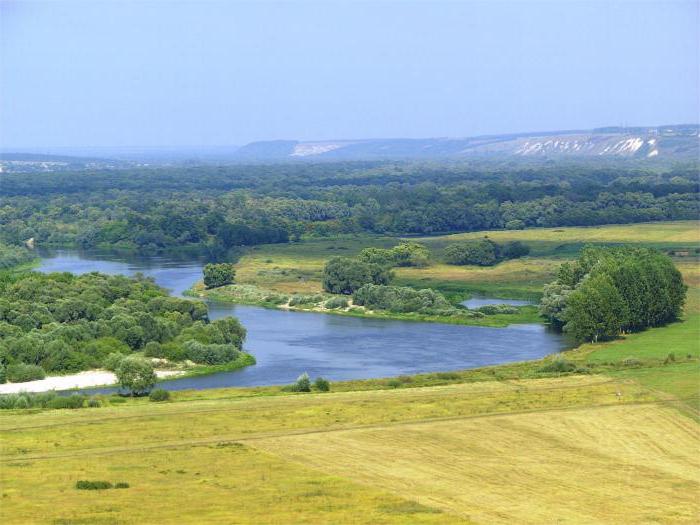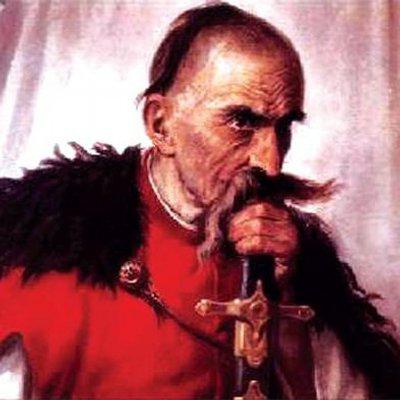Bulavin Kondraty Afanasevich was a Cossack chieftain. He went down in history as the leader of the Don Uprising in the early 18th century. This event should be considered as one of the Cossacks rallies against the policy of the authorities to centralize the state and violate their traditional orders.
Riots Background
Bulavin Kondraty Afanasevich was born in 1660 in the family of a village ataman in the village of Trakhizbenka. He had military skills, since he participated in the campaign against the Tatars, as well as in the Azov campaign. The immediate prerequisite for the uprising was the ban on the Cossacks' production of their own salt. And also the requirement to give them runaway peasants. The first measure was aimed at forcing them to buy salt from the state. To do this, they were forbidden to have their own saltworks. This caused discontent and indignation. Since the inhabitants of the villages traditionally produced their own salt.
As for the second order, this order touched on the very foundations of the so-called “Cossack freemen”. Its essence boiled down to the fact that anyone who took refuge with the Cossacks was untouchable. However, it should be noted that these decrees were carried out in accordance with the policy of centralization during the reign of Peter I. The king sought to subordinate the power to the center of the outlying areas and bring self-government under control.
First stage
After the above orders were issued, Bulavin Kondraty Afanasyevich assembled a small detachment of Cossacks. And in 1707 he attacked the Izyum regiment, which occupied the Cossack saltworks. The surprise attack was successful. Then the rebels attacked Yu. Dolgoruky. His detachment was completely destroyed, and the prince himself died. These events marked the beginning of one of the largest folk performances of the century. The borders of the riot expanded to include areas of the Lower Don, which caused serious concern for the government.
Peter I had all the more reason to worry about this news, because during these years our country was waging a tense war with Sweden. The uprising within the country threatened with serious complications. A 20,000th detachment under the command of V. Dolgoruky, who was the brother of the murdered prince, was sent to the place of rebellion. Then Bulavin Kondraty Afanasyevich, along with his supporters, retreated to Ukrainian lands. The coming winter led to a brief lull.
Second phase
In the spring of 1708, the uprising flared up with renewed vigor. Ataman relied on Zaporizhzhya Cossacks, Kalmyks. The ranks of his troops were gradually replenished by impoverished peasants. The rebellion took on a fairly wide scope, largely due to the fact that just this year was one of the hardest in the war. And the soldier’s needs demanded new expenses, recruitment packages, which led to mass impoverishment of the peasants. Thus, in the spring of the new year, the uprising received an additional impetus. Therefore, it spread to neighboring counties and regions.

Bulavin Kondraty Afanasevich, whose biography went down in history solely because of the uprising, organized and led by him uprising, sought to create a strong point that would become the main outpost of the rebels. For this purpose, he chose the city of Cherkassk. Here he encountered stubborn resistance, skillfully organized by the ataman L. Maximov. The latter offered stubborn resistance to the rebels. However, he was betrayed, captured by the locals and foremen, who gave him to the rebels. He ordered the execution of him along with supporters.
Success of the rebellion
One of the most famous leaders of popular uprisings was Bulavin Kondraty Afanasevich. The biography of this chieftain is interesting. It shows that the population of the Cossack villages became a hotbed of rebellious sentiment. Soon, the uprising swept over a considerable territory, spreading to a number of southern counties. In addition, the chieftain expected to create something like a Cossack coalition, intending to attract wide sections of the local population.

He managed to temporarily gain the trust of his supporters, who, after the capture of the city, proclaimed him their military leader. For a short time, Bulavin Kondraty Afanasevich became a kind of symbol of discontent in the Don lands. The rebellion that he raised took on a wide scope. However, it should be noted that at first he himself sought to give this rebellion some semblance of the fact that the people were unhappy with the abuses of local authorities. And that is why it raised a riot. In approximately the same spirit, he wrote to the authorities, saying that the Cossacks ’speech was largely spontaneous.
Tactics
Bulavin Kondraty Afanasevich, whose photo is presented in this article, developed his own tactics of warfare. It was the swiftness and surprise of the attack. The organization of Cossack troops was taken as a basis. The backbone of the detachments was dragoons, Cossacks, soldiers who escaped from the army. Peasants were taught the simplest skills of warfare. The rebels knew how to conduct sieges, take fortresses, in battle they covered themselves with wagons. In the initial stages, this tactic was somewhat successful and allowed them to achieve a number of victories over government forces.
Third stage
Bulavin Kondraty Afanasevich, whose life is briefly described in this publication, hoped to expand the area of popular rebellion. And this he partially succeeded with the help of his supporters, who were actively involved in attracting peasants to their side. The chieftain himself also wrote the so-called "lovely" letters, which he lured into his troops peasants and Cossacks. It is interesting to note that in them he referred to the abuses of local authorities, and also called for standing up for the true king. These slogans were quite in the spirit of popular uprisings. About the same thing then Pugachev wrote in his letters to the common people.

Kondraty Afanasevich Bulavin had several of the most active supporters who managed to raise other areas. His colleague I. Nekrasov on the Volga lit a new center of rebellion. But the rebels attached particular importance to the capture of Azov. However, the lack of sufficient military experience affected it. The rebels, not having artillerymen in their ranks, were unable to take this fortress. Moreover, they were bombarded by land and sea artillery. The only thing they achieved was the capture of the outpost suburbs.
End of the rebellion
Ataman Kondraty Bulavin was attacked by his supporters in the summer of 1708. They decided to extradite him to the authorities. However, during the ensuing skirmish, he died. There is a point of view that the chieftain, not being able to leave, committed suicide. However, the fact that even after his death the uprising did not stop is indicative. On the contrary, the aforementioned Nekrasov tried to unite the scattered detachments of his leader under his leadership. In the Don lands, rebellion was led by N. Naked. Several more chieftains acted on the Volga. However, due to the fact that they did not unite, the riot ceased. The remaining units went to the Kuban region.
Rating
In Soviet historical science, the opinion that the uprising led by K. Bulavin was an anti-feudal opposition of the masses against the ruling class was quite firmly established. Such an interpretation of events is connected with the Marxist ideology, according to which armed actions of this kind were a manifestation of contradictions and antagonism between the classes of exploiters and exploited. However, in modern historiography it is generally accepted that this rebellion was a local regional demonstration by the Cossacks, dissatisfied with the government’s attempts to violate their traditional orders. So, for example, the famous historian N. Pavlenko believes.
Indeed, it is difficult to say that this rebellion was a popular and mass demonstration. Since the scope of the uprising was still not so wide compared, for example, with Pugachev’s uprising. Nevertheless, rebellion has gone down in history, and Bulavin Kondraty Afanasyevich is considered one of the most famous leaders. Interesting facts about him are not so numerous. In addition to the above, one can also name the fact that he was erected a monument in the city of Bakhmut.